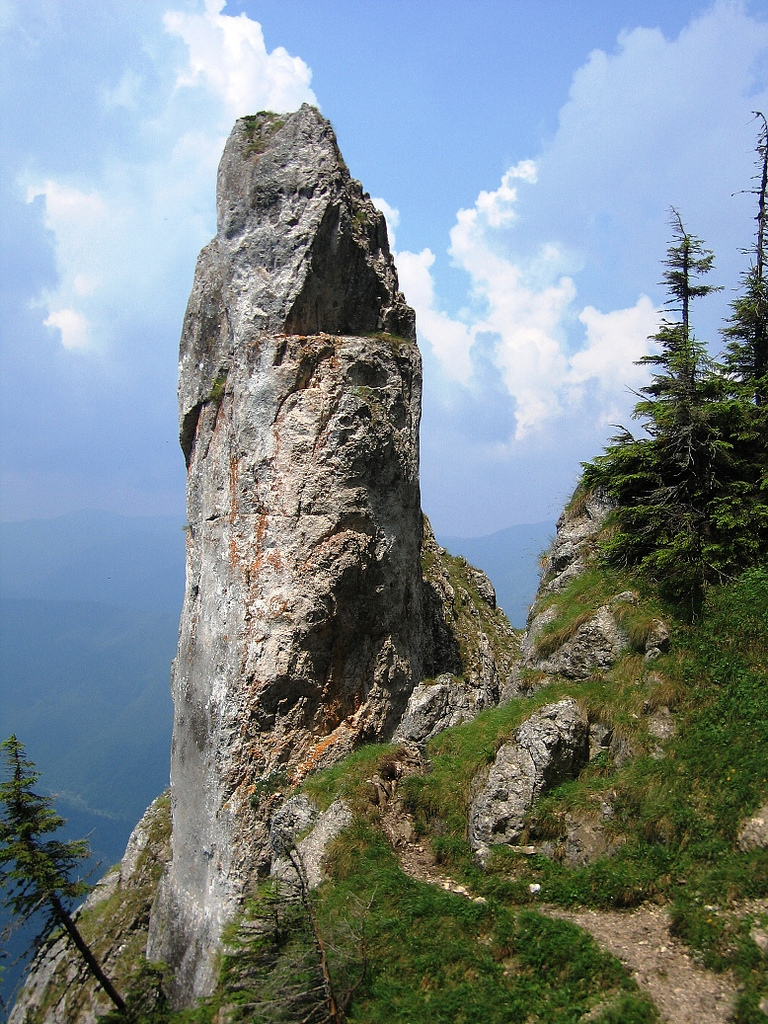
fotografie Maddie Ancuta
Muntii Bucegi. Romania Te iubesc!
Romania gasita pe cer.
Acest proiect este lansat in special pentru noi cei care am plecat din Romania. Radacinile noastre sunt in Romania. Vreau ca acest coltisor sa fie un loc de liniste si relaxare pentru noi si copiii nostri. Sa nu uitam istoria tarii noastre, obiceiurile, traditiile, sa-i invatam pe copii ceea ce noi am invatat dar la noi acasa. Imi reamintesc cu mare placere duminicile cand ma suiam in masina si plecam sa vizitez locurile minunate din tara. Suntem destul de departe… dar datorita internetului putem fi foarte aproape. Asa ca aceasta rubrica Romania Te Iubesc este un loc plin de amintiri pentru mine si pentru cei plecati departe de casa. Vreau sa descoperim si dupa caz sa redescoperim Romania impreuna pentru noi, dar mai ales pentru copii nostri. Nu trebuie sa uite niciodata de unde-si trag radacinile.
Identitatea culturala a fiecarui popor poate fi reflectata de miturile si legendele care l-au insotiti pe tot parcursul dezvoltarii lui. De aceea, este foarte important sa cunoastem literatura de natura populara, sa cunoastem miturile si legendele care au circulat odinioara pe aceste meleaguri.
Intotdeauna am fost fascinata de legende si povesti. Se spune ca in fiecare legenda gasim un sambure de adevar. Povestea s-a scris, plecand de la o realitatea, care pe parcursul anilor a fost dezvoltata adaugand elemente noi, poate imaginare care fac ca legenda sa fie mai frumoasa sau mai spectaculoasa. Dar legenda se bazeaza pe un sambure de adevar. Zanele, uriasii ii regasim in legendele lumii intregii. Internetul este un instrument al lumii moderne, azi in cateva secunde aflam noutatile din capatul celalalt al lumii.
Legendele vin din trecutul indepartat. Oare este imposibil ca uriasii, zanele, personaje care noua azi ni se par ireale, sa nu fi existat?
In randurile ce urmeaza va scriu cateva ganduri referitoare la lumea ce ne inconjoara, la cea care a generat pentru noi, romanii, atatea minunate legende. In mijlocul acestei mirifice “imprejmuiri” s-au desfasurat si legendarele confruntari ale stramosilor nostri, nascand, de asemenea zamisliri ale cugetului romanesc, transmise prin viu grai, din generatie in generatie.
Natura a inconjurat intotdeauna viata romanului, cu munti si ape, cu paduri fosnitoare si campii mladioase, smaltuite cu flori, cu multele ei plante, pasari si vietuitoare. Copiii si-au impletit ghirlande si coronite din florile gradinilor si pajistilor, s-au imprietenit cu micile vietuitoare si le-au luat in joaca lor. Oamenii maturi au reprezentat natura in creatiile lor, inca din cele mai vechi timpuri.Taranii au evocat copacii in ciopliturile stalpilor si grinzilor casei, si-au inflorit tesaturile si ciopliturile cu motive culese si stilizate din natura. Aceste aspecte,alaturi de minunatele peisaje oferite de formele de relief, armonios ingemanate, precum si glorioasele fapte ale stramosilor, l-au indemnat pe omul de rand la creatie, astfel ajungand si la noi minunatele legende istorice, geografice sau cele despre animale, plante si flori.
Pe aceasta cale, doresc sa ma implic in ocrotirea vietii acestei ,,fermecate lumi” si intru transmiterea acestor creatii generatiilor care vin.
Va invit, pe toti cei care sunteti indragostiti, fascinati si doresc sa pastreze cat mai viu legendele poporului roman sa ni se alatura, sa sprijine culegerea si publicarea acestora.
Romania Te iubesc!
Detunatele.




